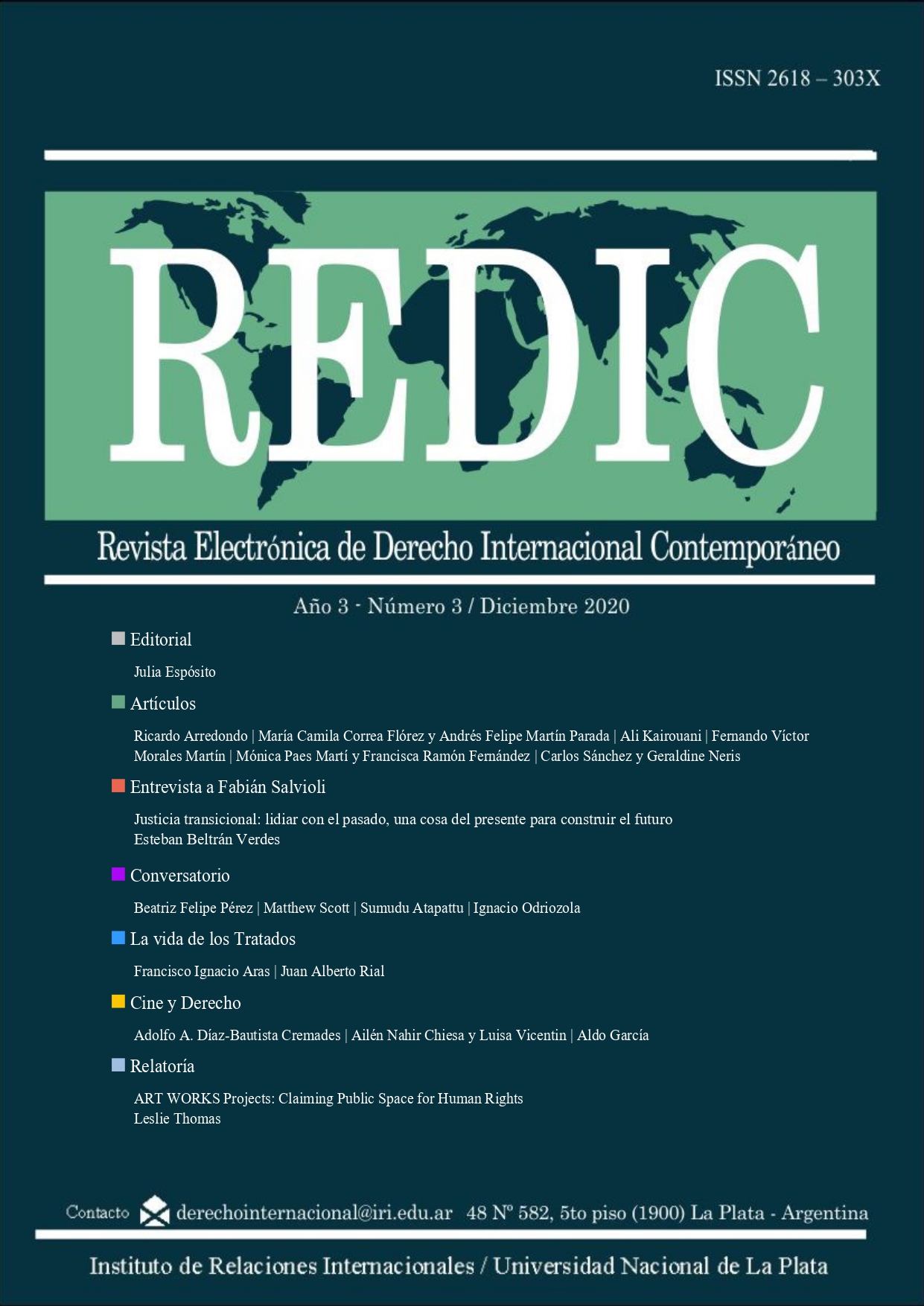ART WORKS Projects: Claiming Public Space for Human Rights
DOI:
https://doi.org/10.24215/2618303Xe013Palabras clave:
human rights, public space, Darfur, AWPResumen
ART WORKS Projects (AWP) was born out of desperation. A photo of a small boy who had been murdered in a genocidal attack against civilians in Darfur by a Sudanese government intent upon their eradication led to the formation first of the DARFUR/DARFUR exhibition of large-scale exterior projections and eventually to AWP. The founders, by and large architects, filmmakers, editors, photographers, lawyers, and designers, weren’t naive enough to believe that art can always end genocide (or any other grave human rights abuse), but they knew it impacted them and so they theorized that the same could happen to policymakers, voters, and ultimately, perpetrators.
Referencias
Descargas
Publicado
Número
Sección
Licencia
Aquellos autores/as que tengan publicaciones con esta revista, aceptan los términos siguientes:
- Los autores/as conservarán sus derechos de autor y garantizarán a la revista el derecho de primera publicación de su obra, el cuál estará simultáneamente sujeto a la Licencia de reconocimiento de Creative Commons (BY-NC-SA) 4.0 que permite a terceros compartir la obra siempre que se indique su autor y su primera publicación esta revista, no se haga uso comercial, y si se remezcla, se transforma o se crea a partir del material, se debe distribuir bajo la misma licencia del original.
- Los autores/as podrán adoptar otros acuerdos de licencia no exclusiva de distribución de la versión de la obra publicada (p. ej.: depositarla en un archivo telemático institucional o publicarla en un volumen monográfico) siempre que se indique la publicación inicial en esta revista.
- Se permite y recomienda a los autores/as difundir su obra a través de Internet (p. ej.: en archivos telemáticos institucionales o en su página web) antes y durante el proceso de envío, lo cual puede producir intercambios interesantes y aumentar las citas de la obra publicada. (Véase El efecto del acceso abierto).































